Northern Peru
South America January 9th, 2009I rolled into Peru, pushed by clouds of mosquitoes across the border at sunrise. My legs lubricated by some Johnny Walker Red offered to me in the street as I asked directions along the way. Stamp out, stamp in, and into the unknown. Dry rolling hills persisted as my eyes longed to see the desert ahead. The northern stretches of the Peruvian deserts of Peru are often fabled by cyclists as infamously dangerous, incredibly dull, and sponsor howling headwinds that double riding hours and cut egos down to size. This information, had me longing to traverse this stretch. I quickly found my way out of the hills and into the flats. Baked sand radiated heat and everything that once lived seemed brown and crispy. I took a unfortunate but epic shortcut which led me through town after town, mired in sand, choked with goats, dogs, and windows with peering eyes watching the gringo pushing his bike through the deeper patches. I had hoped to make it all the way to Piura from the border that day, but planned for camping just in case. I thought I had hauled enough water to carry me through, but in the end, I had drunk all 6 liters or so and my throat parched. After pushing my bike for an hour straight, I sat and waited. No traffic had passed for hours but I didn’t fear; it doesn’t serve me anymore. Eventually a van came by, picked me up, and offered to drive me the remainder of the way back to the pavement. My only option, I accepted. It took another hour by car through the sand, an impossible task by bike that day. Thirsty, tired, covered in dust, I rolled into Piura for the night. Welcome to Peru.
I met Japhy the next morning, having caught up with him by using my “shortcut” the day before, and headed into the wind. The roads fair and traffic predictably seen minutes before its arrival. We cranked almost directly southward, making nearly one degree of latitude per day. The roads incredibly flat and the scenery alien and bleak. Never in my life have I seen such a quintessential desert. At times there was absolutely nothing to be seen. Only huge expanses of featureless sand stretched to the horizon. At night, camping meant hauling the rig over long stretches of sand to find any sort of shrub or tree to hide the tents from the peering eyes of the passing motorists. In the day, we drafted on grinding 2km intervals to keep us moving at a consistent pace.
This area boasts some of the most extravagant archaeological finds of the Moche culture of Peru. I was fortunate enough to be riding with an anthropologist who studied under the man who discovered some of the sites. On one occasion, we even camped at a dig site. The grounds keeper gave us a private tour of the area, showing us where the huaqueros (grave robbers) had dug into the tombs casting aside ancient bones and shattered pottery which now litters the grounds.
Ever southward, through yet more desert until the final stretch where I opted to take a bus rather than ride and Japhy headed in a different direction into the mountains. This stretch, past the city of Paijan, in the past has offered several obligatory robberies to cyclists. Not offering my patronage, I arrived in Trujillo by bus and headed to Lucho’s Casa de Ciclistas.
Lucho and his family have been hosting cyclists for around 25 years now. The house is sort of a free place for cyclists to stay as long as they want. Cycling paraphernalia litters the rooms and walls, causing travelers to refer to the place as a temple of cycling. I penned my name in the logbook, the 1027′th visitor. I rested for a week, catching up with friends I’d met in Ecuador, and meeting new cyclists ask they passed through.
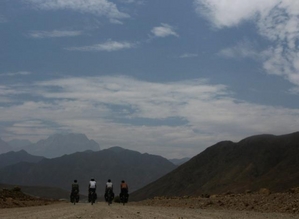
I eventually headed out toward Huaraz. Yet another climb from sea-level to 3000m (9000ft) awaited me. With new friends to draft with, Soren, Brent, Sven, and I headed back into the wind before turning into a canyon and upwards into the Cordillera Blanca. This leg is accented with hot dry valleys followed by ~90km of gravel. The grade, save one short climb, was gentle and the mountains astounding. It was however steep enough to let me know my current drive train was done for. My new chain jumping teeth as I climbed and eventually had me walking a few sections. The trucker, ailing, let out hysterical screams from a pedal; sending looks of worry in my direction from my riding companions. I pedaled onward, enjoying the scenery. Barren mountains, mineral rich, striped with red, yellow, orange, and even green coloration passed us by as the earth turned under our wheels. Passing miners, riding on top of trucks loaded down with coal, grinned with pitch black coal dust faces that would make any Avon rep or dermatologist shudder.
Passing through the Cañon del Pato, we made our way through around 30 dark tunnels, chiseled into the face of the steep canyon wall, before again reaching pavement. The landscape opened up. Greenery abounded in the form of farming. For the first time in a long time, I cruised easily with a wicked tailwind to propelling me into the valley. We made Caraz, where I bid adieu to the fellows, taking a different route, and headed easily into Huaraz.
Huaraz, the center of the tourist industry in the Cordillera Blanca, is choked with gringos, pedallers, guide shops, and overpriced restaurants, internet cafes, and hostals. However, it’s setting is beautiful. The real attraction is the high snow capped peaks, many above 20,000ft, circling the area.
I again met Japhy for a short backpacking trip into the mountains. With a pair of rented books and a backpack we headed down the trail. Most passers by carrying only water and camera, rented mule trains bearing the load. Several peaks showed themselves along the way, including Alpamayo: the most beautiful mountain in the world (according to UNESCO anyway). I have seen mountain scenes as spectacular as these. I was fortunate to have some clear weather to see these peaks, as many others were not so. Two days of gentle grade upward to Union Pass (15,558ft) and two days down and out.
After returning to Huaraz, I searched high and low for bike parts. None were to be found and every greasy bike mechanic’s finger pointed toward Lima. I opted instead to head back to Trujillo by bus, to the Casa de Ciclistas and see if Lucho could help me out. The sealed bearing cartridge inside my pedal had partially shattered. When I opened the end cap a wind blew past me; my pedal had given up the ghost. Bearings fell out and I shot some quick emails to Crank Brothers asking them what to do. A month or so later, a brand new set of Crank Brother’s Mallet pedals arrived. They also sent me a repair kit for pedal rebuilds. I love these pedals but I will probably rebuild them every 8000km or so if I have the opportunity. Drive train parts were partially brought from Lima. And the others? Well, I haven’t gotten around to ordering them.
I have had a lot of fun here in Trujillo, making new friends, taking in the local sights, tuning up my Spanish for $1.50/hr, helping Lucho with projects, building silly websites, and generally relaxing. I have been off the bike now for a couple months and am looking forward to the acute realism the suffering I will undoubtedly endure when I do leave. With more than one year of travel under my belt I find I want one thing more than anything else. I don’t want to stop.
It’s a beautiful life.
One Response to “Northern Peru”
Leave a Reply
You must be logged in to post a comment.
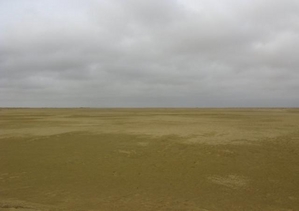
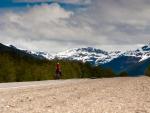
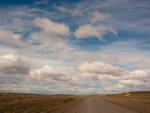
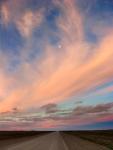
January 22nd, 2009 at 12:51 pm
Holy cow, what an amazing adventure. Looking forward to reading more, particularly your experiences as you head through Chile (my native country).